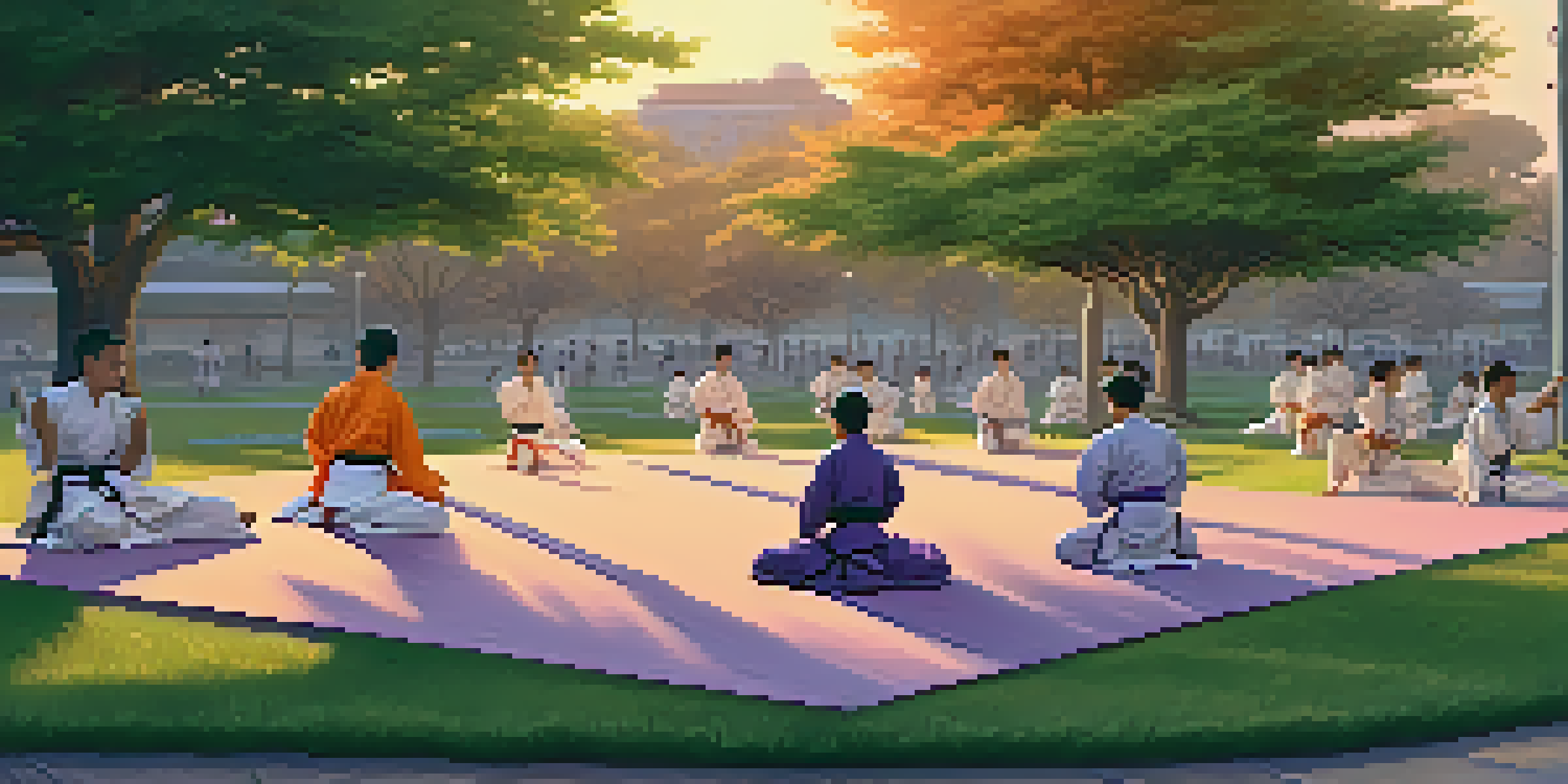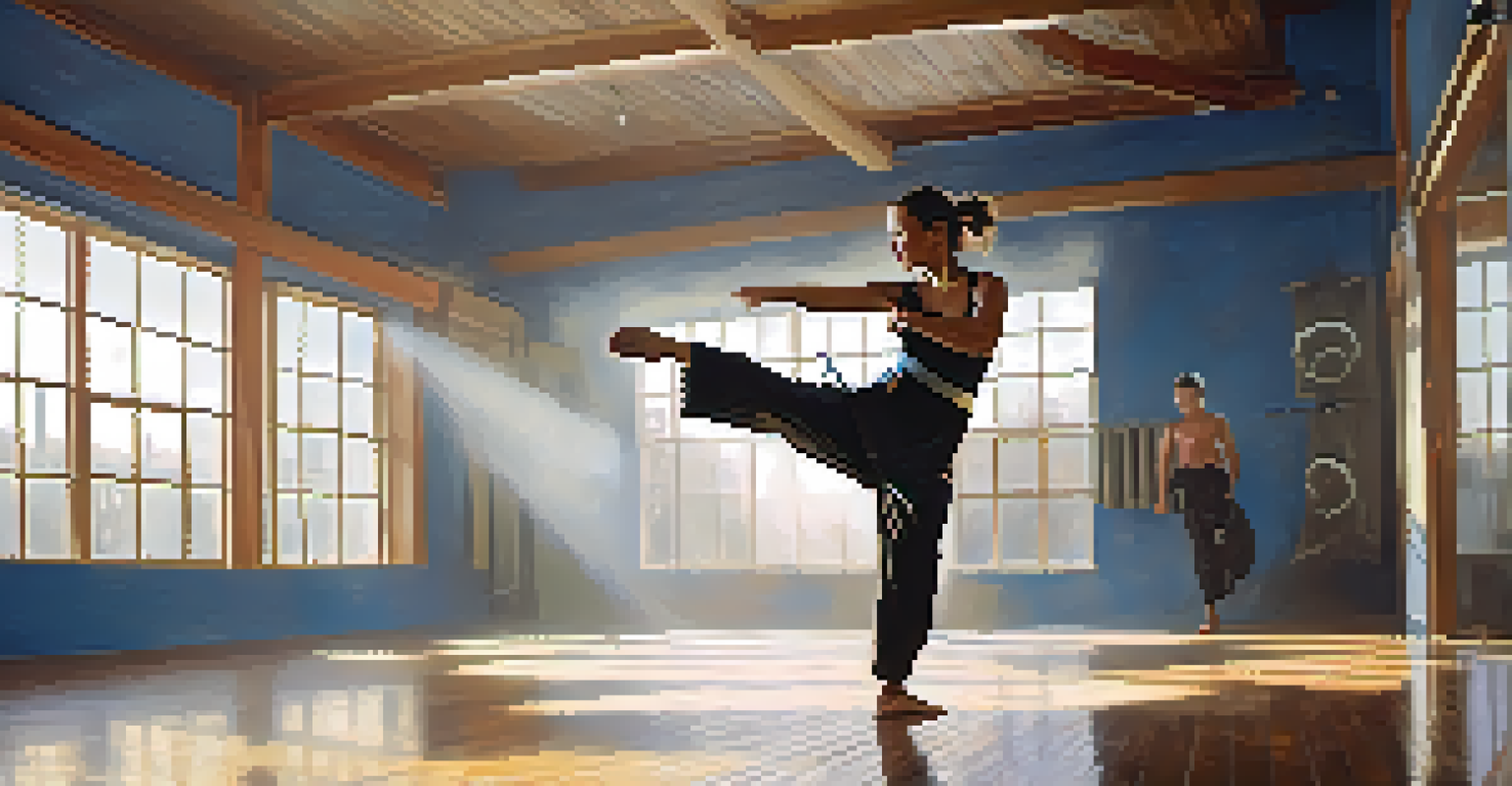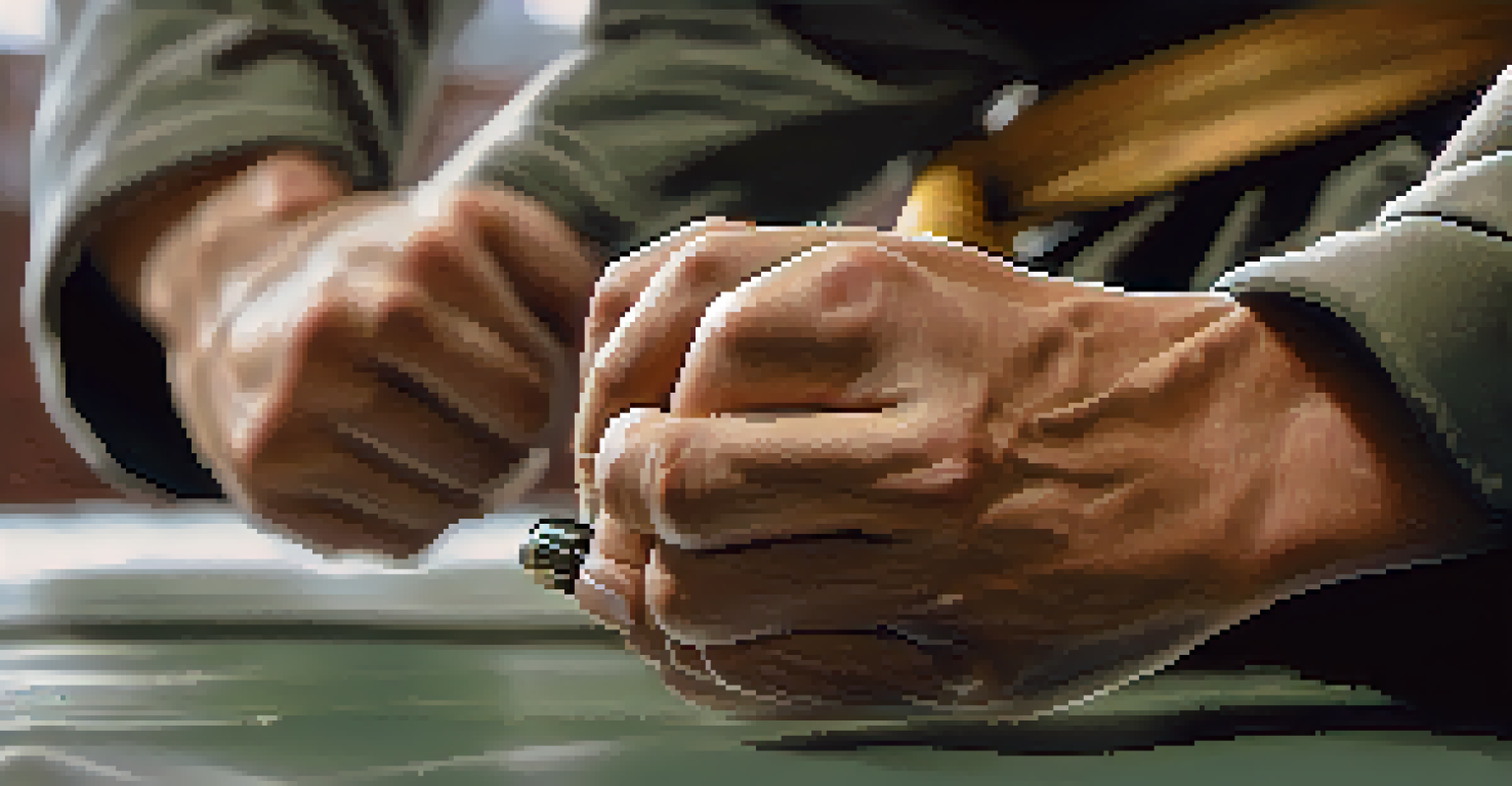Using Martial Arts to Defend Against Common Attacks Safely

Understanding Common Attacks and Their Risks
Everyday life can expose us to various threats, from muggings to unexpected confrontations. Understanding common attacks helps us recognize potential dangers and prepare ourselves mentally. For instance, knowing the difference between a surprise push and a direct assault can significantly alter how you respond.
The greatest weapon against stress is our ability to choose one thought over another.
Martial arts training emphasizes awareness and response, making it essential to familiarize ourselves with these scenarios. By understanding the motivations behind such attacks, we can better anticipate and react to them. This awareness isn't just about physical readiness; it also builds confidence in our ability to handle threats.
Ultimately, knowing what to expect in a dangerous situation can help reduce panic when it occurs. This knowledge allows for quicker, more effective responses that can keep you safe. In the following sections, we'll explore specific techniques to handle these situations.
The Importance of Awareness and Prevention
One of the best defenses against common attacks is situational awareness. By being aware of your surroundings, you can often avoid potentially dangerous situations before they escalate. For example, keeping an eye on exits in a crowded place or noticing a suspicious person can give you the upper hand.

Martial artists train to develop a heightened sense of awareness, which allows them to recognize threats early. This skill can be practiced by paying attention to your environment and assessing potential risks regularly. Making it a habit can significantly enhance your personal safety.
Awareness Reduces Attack Risks
Being aware of your surroundings can help you avoid dangerous situations before they escalate.
Moreover, prevention is key. Strategies such as avoiding dark alleyways or traveling in groups can deter attackers. By being proactive, you not only reduce your chances of encountering danger but also create a safer environment for others around you.
Basic Stances and Movements for Defense
In martial arts, stances and movements are foundational for effective defense. A strong, balanced stance can help you absorb impacts and maintain stability. For instance, the 'horse stance' teaches you to stay grounded, making it harder for an attacker to knock you off balance.
Self-defense is not just about defending your body, but also about defending your mind and spirit.
Simple movements, like stepping back or to the side, can create distance between you and a potential attacker. This distance not only helps you evade attacks but also provides the necessary space to counter. Practicing these movements regularly can make them instinctive, which is crucial in high-pressure situations.
Incorporating these basic stances and movements into your daily routine can enhance your confidence and readiness. Even if you don’t practice martial arts rigorously, familiarizing yourself with these techniques can significantly increase your safety.
Utilizing Blocks and Parries Effectively
Blocking and parrying are essential skills in martial arts, designed to deflect attacks without causing injury. A well-timed block can neutralize an opponent's strike, allowing you to follow up with a counterattack. For example, if someone attempts a punch, using your forearm to deflect it can create an opening for you to escape.
Learning the proper techniques for blocking and parrying can make a significant difference in your response to an attack. While it may seem intimidating at first, practice helps build muscle memory. Over time, these actions can become second nature, allowing you to react quickly and efficiently.
Basic Techniques Enhance Defense
Familiarizing yourself with basic stances and striking techniques can significantly increase your confidence and safety.
It's important to remember that the goal of blocking is to protect yourself while creating opportunities to escape. Being able to redirect an attack can be a game-changer in a dangerous situation. Continuing to practice these techniques helps reinforce your skills and confidence.
Striking Techniques for Self-Defense
When it comes to self-defense, knowing how to strike effectively is crucial. Essential strikes such as punches, kicks, and knee strikes can help you create distance from an attacker. For instance, a well-placed kick to the knee can incapacitate an assailant and give you a chance to escape.
Practicing striking techniques allows you to develop precision and power. Training in martial arts often includes drills that enhance your striking abilities, helping ensure your movements are both effective and efficient. It's also about knowing when to strike; often, the best option is to create an opportunity to flee rather than engage.
Remember, the aim of striking in self-defense is not to win a fight but to escape safely. A solid understanding of striking can empower you to react decisively when needed. As you train, focus on making these techniques part of your instinctual responses.
Using Leverage and Joint Locks for Control
Leverage and joint locks are powerful tools in martial arts that allow you to control an attacker without relying solely on strength. By understanding how to manipulate joints, you can neutralize a threat effectively. For example, a wrist lock can restrict an assailant's movement, making it difficult for them to continue their attack.
Training in joint locks teaches you the importance of technique over brute force. This is especially beneficial for individuals who may not possess significant physical strength. By leveraging body mechanics, you can gain the upper hand in a confrontation, regardless of size.
Mental Preparation is Key
Building mental resilience and preparedness is essential for effectively responding to potential confrontations.
Practicing these techniques can boost your confidence in handling physical confrontations. It's essential to remember that joint locks require precision and control, highlighting the importance of training. Through consistent practice, you develop the skills needed to manage various situations safely.
The Role of Mental Preparedness in Self-Defense
Mental preparedness is a critical aspect of self-defense that often gets overlooked. Being mentally ready for a potential confrontation can significantly impact your ability to respond effectively. Visualization techniques, where you imagine yourself handling an attack, can be incredibly beneficial in building this mental readiness.
Martial arts training emphasizes not just physical techniques but also mental resilience. Learning to stay calm under pressure can help you think clearly and make better decisions during a confrontation. Practicing mindfulness and stress-relief techniques can enhance this mental preparedness.

Ultimately, combining mental and physical readiness creates a comprehensive self-defense strategy. Understanding that it's not just about the moves you know, but also about how you approach a situation, can empower you greatly. The more you prepare mentally, the more equipped you become to handle real-life scenarios.